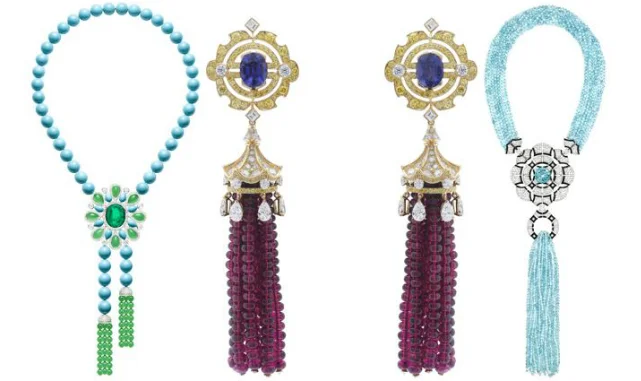Tassels Galore at the Biennale des Antiquaires 2014
Tassels started as simple knots created to prevent the unravelling of threads on a string or cord, but in the 16th century passementiers in France developed the them into a more elaborate decoration, along with fringes, rosettes, and pompons, and by the 19th century tassels were usually organized around a chunky wooden core that allowed for even more elaborate and lavish details.
Tassels have also long been part of the jewelry vocabulary too, whether dangling off earrings or at the end of a sautoir necklace, and jewelers have used a pearl or gemstone to channel a certain Bohemian flair. According to Rahul Kadakia, Christie's international head of jewelry, tassels started to appear more in jewelry design in the late 18th century, “If you look up the French Crown Jewels, many of the important brooches had diamond tassels. I would say late 18th Century,” he said, adding the tassel had another heyday period during the roaring ‘20s.
At the Biennale des Antiquaires tassels abound with jewelers given different types of beads to create lavish effects. At Graff Diamonds, design director Anne-Eva Geffroy played with mini-pebble beads to create her tassels, while at Chaumet, designer Claire Dévé-Rakoff used small round beads of lapis and spinels for hers, with small diamonds hidden inside to enhance their sparkle.
“I think the tassel has a very playful feel. It’s very mobile and supple, and you want to touch it, play with it,” points out Dévé-Rakoff, adding she has always included tassels in her designs.
As first published on BlouinArtinfo.com

